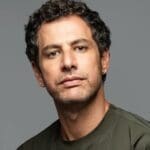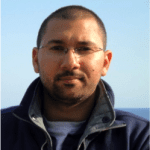
Executive Summary
Technical solutions shorn of political context have contributed to a failed state in Palestine and harmed the collective Palestinian struggle for freedom, transforming the Palestinian Authority into an NGO-like body.
Key Points
- Mainstream economic prescriptions cannot work in the Palestinian context; policies should directly address the conditions created by Israel’s occupation
- Governance reforms, seen as a success, partly led donor countries to accord formal statehood recognition; but the reality of Israeli control indicates otherwise
- The market looms large in Palestine, effectively replacing economic resistance to the occupation with cooperation
- The PA and donors should address the political as well as the economic impact of their policies
Overview
International support to the Palestinian Authority (PA) has depoliticized economic development policy, leading to an infatuation with prescriptive efficiency and technical solutions that have transformed the PA into an NGO-like body.
Israeli control over the Occupied Palestinian Territory (OPT), and Israel’s influence in determining donor aid policies has forced the PA to resort to “occupation- circumventing” economic activities that try to bypass Israeli obstacles with very little downward accountability towards the Palestinian people.
Reforming Governance but Ceding Control
Among donor countries providing budget support to the PA, governance reforms over the past 10 years have been considered a resounding success. However, the PA’s developmental approach has focused on technocratic, administrative, and process-oriented considerations. Israel controls even these mundane processes, although its influence in planning “development” projects is understated and under-reported.
When a Second-Best Policy Option Is Better
One of the major initiatives of Salam Fayyad as Prime Minister was to develop three-year plans setting development objectives for the OPT. The reform involved in preparing the 2014-2016 development plan forced the PA’s hand in the direction of fiscal contraction in order to align with diminishing aid flows and Israel's repeated withholding of clearance revenues.
The conditions of ongoing occupation have turned what is a “best practice” in development planning into an acknowledgement of defeat by the PA. Instead, a second-best policy strategy may be to continue producing comprehensive development plans that function as a policy statement about the Palestinians’ thwarted development potential.
Misguided Focus on the Market
The current PA discourse represents the role of the government and municipal bodies as merely service-related, or apolitical. Instead of economic resistance to occupation, shared business endeavors have bloomed, creating mutual interests between Palestinian capital and power on one side, and Israeli business on the other.
The economic relations between the PA and Israel, together with the PA’s neoliberal approach have had a gradual yet profound impact on people’s choices and consumption trends. In line with the distorted pattern of credit allocation, wealth has been more and more concentrated while real wages declined by 11% between 2006 and 2010.
An Occupation-Circumventing Economy
Lack of support for Palestinian agriculture has been attributed by decision-makers to the low productivity of the sector. However, the low productivity is in part a result of the lack of PA support or international aid, which hinders farmers from using new technologies to replace outdated techniques.
Despite the obstacles to agricultural activity placed by the Israeli occupation, investment in this sector could have an immediate poverty-reduction impact by generating employment in rural areas. Finally, underinvestment in agriculture has resulted in migration out of Area C that has indirectly facilitated settler expansion.
Untying the Hands of Palestinian Policy Makers
Neoliberal policy frameworks, an intransigent Israeli occupation and upward accountability to donors have diluted the PA’s downward accountability to respond more effectively to citizen priorities. Steps that should be urgently taken include the following:
- The PA should adopt a path towards cutting off links of dependency with Israel, starting with boycott of Israeli products that can be replaced by local industries.
- The PA should consider transitioning to a mandate of basic service provider rather than attempting to run the OPT in the absence of elections and political or economic sovereignty.
- Donors to the PA must develop a policy to balance strengthening the PA by supporting independent political organization and civil society mobilization.
- Donors should ensure that governance reforms involve crafting and putting in place institutionalized systems of accountability between the PA and Palestinian citizens.
Overview
Since its inception, the Palestinian Authority (PA) has been heavily handicapped. Israel not only failed to transfer control over the powers and resources necessary for governance: It effectively transferred the burden of governance to the PA. International support to the PA in billions of dollars for “development”, infrastructure, humanitarian relief, and budgetary support was hailed as a successful endeavor in institution building. Instead, it brought on dire socioeconomic conditions and transformed the PA into an NGO-like body, a well-oiled administrative machine to facilitate the implementation of micro-projects funded by donor aid – and even these small projects are controlled by Israel in ways that are not widely reported.1
Al-Shabaka Policy Member Ibrahim Shikaki and Guest Author Joanna Springer argue that de-politicizing economic development has led to an infatuation with prescriptive efficiency and technical solutions without due regard for the political and institutional context, an approach that can be termed techno-fetishism. Worse, this has damaged the collective Palestinian narrative of liberation. Further, Israeli control over the Occupied Palestinian Territory (OPT), and Israel’s influence in determining donor aid policies has forced the PA to resort to “occupation-circumventing” economic activities that try to bypass Israeli obstacles with very little downward accountability towards the Palestinian people.
Among other policy recommendations to address the situation, Shikaki and Springer suggest that the PA reconsider its efforts to implement the mainstream economic prescriptions recommended by international financial institutions. Instead, it is urgent to adopt policies that directly address the conditions created by Israel’s occupation and that progressively lessen dependence on Israel. They also urge donors to balance strengthening the PA with supporting independent political organization and civil society mobilization as well as institutionalized systems of accountability between the PA and Palestinian citizens.
Reforming Governance but Ceding Control
Among donor countries providing budget support to the PA, the governance reforms over the past 10 years have been considered a resounding success. It is partly on this basis that the Palestine Liberation Organization (PLO) has received upgraded diplomatic status or formal statehood recognition in a number of donor countries in recent years. However, a closer look reveals that governance reforms are skirting key areas of sovereignty, due in large part to Israel’s control over most aspects of Palestinian life. Although Israeli controls have been widely discussed, it is worth briefly summarizing them here. They include control over:
- Natural resources, including water resources and minerals.
- Internal financial resources including revenues (import tax, value-added tax, and excise petroleum tax), which comprise two thirds of total PA revenue and financed 40% of its spending in 2013 and which Israel has regularly used as a political pressure card.
- External borders: Any import of raw material or machinery has to go through Israeli scrutiny.2
- Economic policies: Monetary policy is largely determined by the Israeli Central Bank according to Israeli economic needs and priorities, without consideration for the OPT’s economic indicators and objectives. The overvalued Israeli Shekel hurts Palestinian exports and keeps investment out of key sectors such as manufacturing and agriculture that could be oriented towards export.3
Even the World Bank and the International Monetary Fund have recently underscored the vital need for Palestinian control in creating a viable economy and future state. Since Israel controls what should come under the sovereign domain of a national government in an independent country, governance reforms and the PA’s developmental approach have focused on technocratic, administrative, and process-oriented considerations, confining Palestinians to small scale project implementation. However, Israel controls even these mundane processes, although its influence in planning “development” projects is understated and under-reported. Israel sits on the Ad Hoc Liaison Committee (AHLC), the most powerful body in development planning and implementation in the West Bank. This gives it an agenda-setting role in development policy together with major donor countries and international financial institutions.
When it comes to project implementation, the PA is not represented in either of the two local-level coordinating agencies – the Joint Liaison Committee or the Task Force on Project Implementation. However, liaisons with the Government of Israel are active in both agencies, illustrative of its strong on the Palestinian economy. Donors coordinate with Israel for practical reasons, both to implement their projects and as a stand-in for the PA, which lacks sufficient bargaining power vis-à-vis the Israeli authorities. However, as a consequence, a vital governance role is taken out of the hands of the PA, undermining the donors’ alleged state-building objective in the OPT.
Further, Israel interferes in the activities of aid agencies, with serious repercussions for their development projects in Palestine. In 2011 the Association of International Development Agencies (AIDA) published compelling data about ways in which donor resources have been diverted to addressing or circumventing Israeli obstacles, bureaucratic as well as physical. In fact, as the report reveals, Israeli policies are forcing aid agencies to alter programming, leading the majority of agencies to adopt strategies that are less effective and that fail to serve the most vulnerable populations.
In describing Gaza reconstruction efforts in 2012, the former World Health Organization head in Palestine explained, “All our efforts were thwarted by Israel’s Kafkaesque obstruction and bureaucracy. They tied us up in knots negotiating how many trucks would be allowed in, when crossings would be open or closed, what information was needed for goods to be cleared, how many permits they would issue for UN drivers.”
Another stark example of Israeli interference is in the UN-administered rebuilding of homes following the 2014 Gaza War. Through the Gaza Reconstruction Mechanism, the UN effectively took on administering aspects of the Israeli blockade, despite the fact that the siege is in violation of international law. The goal was to facilitate the rebuilding of one fifth of the 100,000 homes ahead of winter by monitoring the materials to ensure they were not used for building tunnels out of Gaza.
However, the systems demanded by the Israelis became unreasonably complex and unwieldy. The amount of cement and other building materials permitted into the territory and disbursed to homeowners was woefully insufficient, contributing to new crisis levels in Gaza. Further, the GPS tracking systems, video cameras, as well as a centralized database of private information on all recipients of materials, contributed to Israeli control over the inhabitants of Gaza. In effect, the international community’s choice to circumvent rather than confront the blockade strengthened Israel’s hand and contributed little to the rebuilding effort.
When a Second-Best Policy Option Is Better
The PA has tried to exercise policy functions within Israel’s stringent controls, as well as the narrow parameters set by the donor community. For example, one of the major initiatives of Salam Fayyad as Prime Minister was to develop three-year plans setting development objectives for the OPT. He utilized a new planning process intended to encourage broader participation and give the PA a greater agenda-setting role.
Palestinian line ministries and donor aid agencies attempted to gather input at the local level in sectoral working groups, and feed their recommendations to decision-makers in the Ministry of Planning. The resulting plans were, however, penetrated by donor oversight, given donor roles as co-chairs of sector strategy groups, as technical advisors, or as representatives in a three-to-one ratio in the Local Development Forum. As for the obstructionist role played by Israel in key decision-making bodies, this is left unmentioned and unaddressed in the plans.
Fayyad’s strategy for “liberation-via-reform” was discredited in 2013 after aid-dependent GDP growth began dwindling, and after little change was seen on the ground following statehood recognition in the UN in 2012. Still, donors and PA ministries continued to direct resources and attention to improving the planning process for the 2014-2016 development plan.
The new goal was to tie planning to the budget process by coordinating across agencies and synchronizing administrative cycles. In addition to complex new bureaucratic processes, new types of data collection are necessary in order to set realistic predictions of individual donor budgets over a three-year time frame. As can be seen in the detailed terms of reference provided in the 2014-2016 planning framework, the measure of success or failure becomes how well those terms are put into practice, rather than the impact of the resulting development plan. In other words, it is a matter of administrative success rather than developmental progress.
Further, this particular reform has forced the PA’s hand in the direction of fiscal contraction in order to align with diminishing aid flows and Israel’s repeated withholding of clearance revenues, not to mention the depressed flow of resources from the OPT itself. Another implication of this approach is that it ties PA public expenditure, and therefore developmental possibilities in the OPT, to budgetary decisions made within donor country parliaments. Despite substantial reforms on the PA side, donor aid is still politically determined and therefore often unreliable, making the entire medium-term planning approach an exercise in “make-work”.
If the greater goal of institutional reform is to demonstrate to the donor community that the PA is a responsible recipient of donor funds through consistent efforts to reduce its budget deficit even as public resources are being choked off by the occupation, then these reforms are doubtless achieving their goals. However, if the aim is a government with greater capacity for leadership in setting the developmental agenda and strategy of the OPT, then these reforms have failed.
Although tying planning to budgeting is undeniably best practice, the political and economic context of the OPT may mean that a second-best policy solution could have better outcomes. The 2014-2016 planning framework acknowledges that realistic budget expectations mean fiscal expenditures must be restricted to addressing “the most urgent basic needs” of Palestinians. This sounds more like a strategy for humanitarian intervention than the development plan for a sovereign state. In other words, the conditions of ongoing occupation have turned what is a “best practice” into an acknowledgement of defeat by the PA. Instead, a second-best policy strategy may be to continue producing comprehensive development plans even though they are unlikely to be funded. These plans would function as a policy statement about the Palestinians’ thwarted development potential. They should be based on a reasonable budgetary framework and directly attribute the cause of shortfalls to occupation and aid dependence.
Misguided Focus on the Market
Governance in its broader sense attempts to create the tools and frameworks needed to contribute to the welfare of society in terms of its broader socioeconomic condition and is thus also a byproduct of a specific national discourse. From this perspective, the current neoliberal approach is not only problematic from an economic perspective, but has also had a destructive impact on Palestinian national aspirations. This is partly the result of the PA’s influence on the public discourse surrounding resistance and national policies vis-à-vis the occupying power, as will be discussed later in this brief.
It must be noted that many facets of neoliberalism are strongly skewed in the Palestinian context. For example, in line with neoliberal precepts expenditure on education has been shrinking, leading to gradual increases in tuition fees. Moreover, 300,000 pre-paid electricity meters were installed in the West Bank, not excluding rural areas and refugee camps to eradicate a “culture of entitlement”; as a result, impoverished families lost access to electricity.
However, political considerations have frequently won out over economic policy: Inconsistent with textbook neoliberal recommendations, social welfare transfers from the Ministry of Social Affairs are ever-increasing. Further, despite the sustained pressure to decrease the PA’s wage bill, the public sector still accounts for 20%-25% of the Palestinian workforce. After all, the financial support the PA provides through civil service salaries and direct transfers is key for its legitimacy.
In order to apply its overarching principle of efficiency, which is defined in terms of market transactions, neoliberalism is built on expanding the definition of the market into every domain of human activity. This aptly describes the Palestinian case in which the market has loomed large. The current PA discourse represents the role of the government and municipal bodies as merely service-related, or apolitical. Instead of economic resistance to occupation, such as refusing to pay taxes to Israel or boycotting work in Israel and Israeli products (as was the norm in the First Intifada), economic cooperation (read capitulation) has been promoted. Shared business endeavors have bloomed; in particular, many Palestinians close to the PA became commercial agents for Israeli products, thereby creating mutual interests between Palestinian capital and power on one side, and Israeli business on the other.
The economic relations between the PA and Israel, together with the PA’s neoliberal approach have had a gradual yet profound impact on people’s choices and consumption trends, which lie at the core of the economic system. Consumption trends of Palestinians are not in line with either their income or their overall situation under occupation. Subtle messages in advertising and the banking system encourage overconsumption, by providing a “stretchy” credit system. In 2012, Final Household Consumption was $9.6 billion (86% of GDP in current prices). According to World Bank reports, only 10 countries had a higher ratio between the years of 2010 and 2014.
Palestinian Monetary Authority data shows that in 2013, around two thirds of credit went to real estate (not including construction), credit card debt, cars, “consumption loans”, and trade. While credit is crucial for an economy, a healthy credit system is one which provides either for productive projects that create employment opportunities, or stimulates aggregate demand for local goods. That is not the case in the Palestinian context. On the contrary, in line with the pattern of credit allocation, wealth has been more and more concentrated while real wages (taking inflation into account) declined by 11% between 2006 and 2010 (a 3% decrease in the West Bank and 31% decrease in the Gaza Strip).
An Occupation-Circumventing Economy
While PA officials offer frequent lip service to agriculture, the share of the PA budget directed towards agriculture was a mere 1% compared with 28% for “security” related items in 2013. Further, less than 1% of total aid from 1994-2006 was channeled to agriculturally related activities. This is despite the fact that the World Bank itself spent $8.3 billion on agriculture globally between 2013 and 2015, based on research suggesting investment in the sector has the potential to reduce poverty for 75% of the world’s poor.
The lack of support for Palestinian agriculture has been attributed by decision-makers to the low productivity of the sector. While it is true that the average productivity (ratio of employment to contribution) is lower in agriculture than in services or manufacturing, the agricultural sector plays a far more important role than simply contributing to GDP. Furthermore, the low productivity is in part a result of the lack of PA support or international aid, which hinders farmers from using new technologies to replace outdated techniques. For instance, the contribution of the agricultural sector to GDP decreased from 12% in 1995 to less than 5% in 2012. Lack of support for the sector is frequently justified on the basis of restricted access to land and water imposed by Israel on agricultural activities in Area C (the area over which Israel exercises full control for what was supposed to be an interim period under the Oslo Accords).
Instead, donor policy recommendations revolve around service-based activities, for example software and IT companies. Although investing in an IT sector is important for economic development in the contemporary global context, in this case it bears the hallmark of an “occupation-circumventing” activity. Unlike agriculture, no truck of software programs will go bad waiting in the heat in front of an Israeli checkpoint! Moreover, no border checks are needed to export software. And finally, a problematic aspect of the sector has been the creation of a few joint Palestinian-Israeli IT endeavors. The joint enterprises have exploited the cheap wages of Palestinian programmers who are paid less than a third of their Israeli counterparts.
In several development approaches, a developing economy would import technologies to the agricultural sector, saving labor, and allowing the economy as a whole to shift resources into the manufacturing sector. More recently, developing economies have compensated for restrictions in the manufacturing sector with an emphasis on services. In Palestine, however, the occupation has effectively hollowed out the two productive sectors – manufacturing and agriculture – while the service sector has become more fragmented, aid dependent and less reliable.
It is in fact vital to invest in Palestinian agriculture. In the short term, agriculture is ideal for absorbing labor given its high labor-intensity, which is essential due to soaring unemployment levels in the OPT (23% in 2013). Moreover agriculture once employed a large percentage of female workers. In fact, some suggest the extremely low levels of Palestinian female labor participation rates (17% in 2013 compared to 70% for males) are partially due to the decreased role played by agriculture in the Palestinian economy. Despite the obstacles to agricultural activity placed by the Israeli occupation, investment in this sector could have an immediate poverty-reduction impact by generating employment in rural areas.
Finally, and most importantly in terms of the indissoluble tie between economics and politics, the vast majority of land suitable for agriculture is within the area designated as Area C. This area, which includes most of the fertile Jordan Valley, is not only completely under Israeli control it also encompasses the vast majority of Israeli settlements. While Israeli control is a key obstacle, agriculture needs less infrastructure and investment than the manufacturing sector, for example, and can be utilized by starting with small scale projects. Underinvestment in agriculture has resulted in Palestinian labor moving from these areas to other parts of the West Bank. Pushed to seek employment either in the public sector or service industries, migration out of Area C has indirectly facilitated settler expansion of existing settlement networks, as well as the creation of new outposts. Therefore, increased focus on agricultural areas could help counter the displacement of Palestinians within the West Bank, and hold out against the restriction on access to agricultural land.
Untying the Hands of Palestinian Policy Makers
Development planning in the OPT fails to address structural obstacles to development. The donor community’s policy agenda precludes government expenditure for employment generation in productive sectors, and restrains pro-poor structural changes. Moreover, the technical approach taken to development planning absorbs the PA’s energies in administrative reforms, while offering little incentive for leadership to address citizen priorities. Development plans therefore fail to address the top political and economic priorities of Palestinians. As for the Palestinian private sector, although it was the main pillar of the economy before 1994, it is currently weakened and unwilling to invest in projects without substantive profits or support. Civil society organizations are also aid dependent and work within aid cycles, making it very difficult to support sustainable agriculture projects, for example.
Under the influence of neoliberal frameworks and an intransigent Israeli occupation, the much-touted governance reforms have set limits on the PA’s fiscal capacity and restricted planning to micro-projects. They have further introduced techno-fetishism into Palestinian policy-making, aligning the PA with a technocratic, administrative and process-focused mandate assumed to represent a universal best practice. The PA, in turn, has tried to impose this restrictive framework on the Palestinian policy debate. Upward accountability to donors and the necessities imposed by Israeli micro-control have diluted the downward accountability that could exert pressure on the PA to respond more effectively to citizen priorities. As a result, no real advancement has been witnessed in overall indicators or in the daily lives of Palestinians; on the contrary, these have sharply declined.
In the short run, the PA should adopt a path towards cutting off links of dependency with Israel, rather than the current policy of economic capitulation. One important step is the boycott of Israeli products, starting with consumer goods that are easier to replace from local industries. The PA has already taken a small step in this direction by calling for a boycott of six Israeli companies (how this will actually be implemented remains to be seen). In the long run, the PA should seriously consider transitioning to a mandate of basic service provider (health, education) rather than attempting to run the OPT in the absence of elections and political or economic sovereignty. This is not a simple lump sum change and needs proper planning and internal discussion; one example of such discussion is the Palestinian Center for Policy and Survey Research report “The Day After”.
It is important for the donor community to address the political as well as the economic constraints and ramifications of their policies. Donors should relinquish their grip on agenda-setting through their influence on government policy and programs; this will have to extend to programs in the non-governmental sector as well. A strategic shift can be approached by fostering coherent groupings and political engagement among the OPT’s many civil society organizations. A policy must be developed to balance strengthening the PA with a strategy for supporting independent political organization and civil society mobilization. Finally, governance reforms should involve crafting and putting in place institutionalized systems of accountability between the PA and Palestinian citizens.
Donors also need to confront the issue of aid dependence, perpetuated by occupation-circumventing projects. One practical approach would be to set an explicit agenda of pro-poor economic development. This stands in contrast to neoliberal policy prescriptions that undermine citizen priorities by justifying immediate burdens on the poor with predictions of long-term improvements in economic growth.
Further, donors should support an internally agreed upon resistance discourse. This would make room for supporting projects that bolster the Boycott, Divestment and Sanctions (BDS) movement, particularly through a commitment to fostering greater economic independence. This can be achieved partially by shifting from Israeli to local products. However, success depends on also building more intensive networks with allies abroad to facilitate Palestinian exports, rather than relying on Israeli businesses and clearing houses.
It is time for the PA to acknowledge that mainstream economics is unable to promote any true development in the OPT given that the conditions of prolonged occupation and colonization create a skewed institutional context for development policy and planning. Consequently, the notion of a “conventional wisdom” is outdated and must be abandoned in favor of an approach that takes into consideration the specific institutional and political realities of the OPT. The goal of development planning must ultimately be progress toward freedom, justice and equality for the entire Palestinian people.
- Al-Shabaka publishes all its content in both English and Arabic (see Arabic text here.) To read this piece in French, please click here. Al-Shabaka is grateful for the efforts by human rights advocates to translate its pieces into French, but is not responsible for any change in meaning.
- The only border with no Israeli physical presence is the Rafah crossing point between Gaza and Egypt. However, the crossing has rarely been allowed function.
- While an independent Palestinian currency would allow more control over monetary policy levers, there is legitimate discussion regarding the readiness of a Palestinian currency and the possible alternatives.













